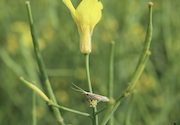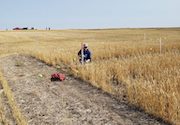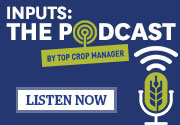| |
| |
 |
 |
| |
 |
|
@{mv_date_MMM d, yyyy}@ |
|
| |
As the spring planting window closes, crops are in good shape for the most part, with some expected regional differences. A wet fall and slow-drying early spring delayed many farmers from getting into the field.
» Read more...
The agriculture operating environment is evolving fast and sustained inflationary pressures on farm input prices dampen the outlook. Is financial risk in Canadian agriculture significantly elevated in the current environment?
» Read more...
At this year’s Top Crop Summit, one thing was clear – Canadian farmers are progressive and inquisitive; constantly looking for solutions and steps to battle any challenge they might face.
» Read more...
|
| |
|
| |
 Colorado potato beetle has become the classic example of insecticide resistance in Canada, with parts of Manitoba seeing increased resistance to some commonly used insecticides in recent years. Alfalfa weevil resistance in southern Alberta alfalfa seed production fields has also become a well-known problem. For farmers growing annual crops, which insects pose the greatest threat for developing resistance?
» Learn more...
Colorado potato beetle has become the classic example of insecticide resistance in Canada, with parts of Manitoba seeing increased resistance to some commonly used insecticides in recent years. Alfalfa weevil resistance in southern Alberta alfalfa seed production fields has also become a well-known problem. For farmers growing annual crops, which insects pose the greatest threat for developing resistance?
» Learn more... |
| |
 Growers have various options of phosphorus fertilizer forms and placement methods, but there is limited information on how different P fertilizer forms may behave as available P sources for crops when added to Prairie soils. A University of Saskatchewan research project looks at identifying the most effective sources and placement methods, which can improve efficiency and ROI while reducing environmental losses.
» Learn more...
Growers have various options of phosphorus fertilizer forms and placement methods, but there is limited information on how different P fertilizer forms may behave as available P sources for crops when added to Prairie soils. A University of Saskatchewan research project looks at identifying the most effective sources and placement methods, which can improve efficiency and ROI while reducing environmental losses.
» Learn more... |
| |
|
| |
 It’s said the first cut is the deepest – for forages, it’s also the longest in terms harvest interval and giving pesky insects the opportunity to snack on the growing crop. Christine O’Reilly, OMAFRA forage and grazing specialist, discusses how the season is going so far for forage farmers, as well as scouting and management tips for alfalfa weevil and potato leafhopper.
» Listen now
It’s said the first cut is the deepest – for forages, it’s also the longest in terms harvest interval and giving pesky insects the opportunity to snack on the growing crop. Christine O’Reilly, OMAFRA forage and grazing specialist, discusses how the season is going so far for forage farmers, as well as scouting and management tips for alfalfa weevil and potato leafhopper.
» Listen now |
| |
|
| |
|
|
| |
| |





